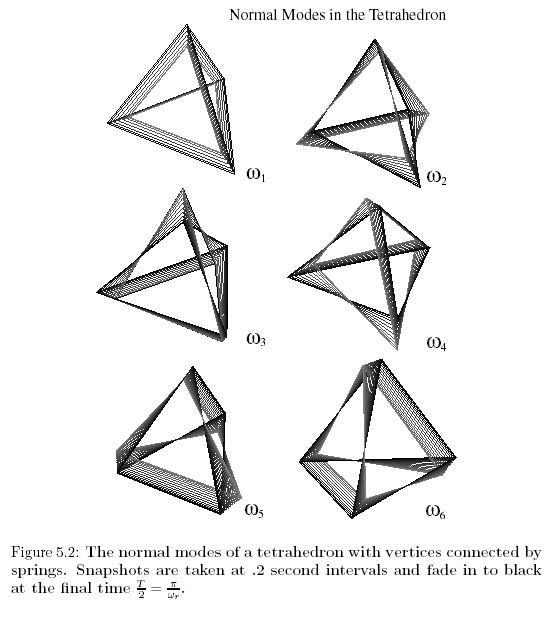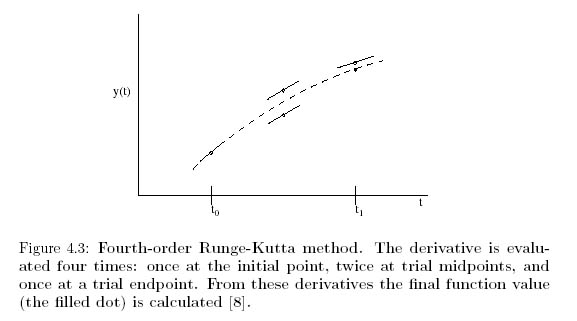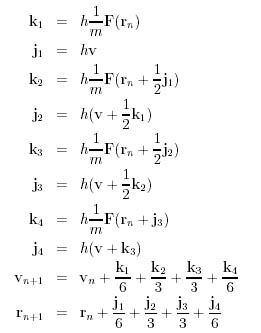Full Thesis: Normal Mode Analysis of the Clathrin Cage and other Semi-Rigid Systems
The associated Mathematica notebooks can be found here.
Here is the work, in a nutshell:
Simple geometric objects are treated as if the vertices are little masses, and the edges are springs. After performing a normal mode analysis, you can find (and visualize), the basic units of motion that compose all possible vibrations. For the tetrahedron, they are:

Most commercial 3D applications now ship with dynamics software to simulate physical systems. The work horse of many of those packages is the Runge Kutta algorithm. It is exceptionally good at predicting how an object will be affected by forces.

The magical RK4 equations:

Reed Professor Johnny Powell thought it would be fun to apply all these techniques to a complex protein, Clathrin. In this figure, I'm using Runge Kutta to relax a simplified version of Clathrin down to its unperturbed state.

Now we get to prod and poke Clathrin to see how it reacts. Our experimental and theoretical results match perfectly, which builds confidence in both techniques. Many more details available in the actual thesis.
